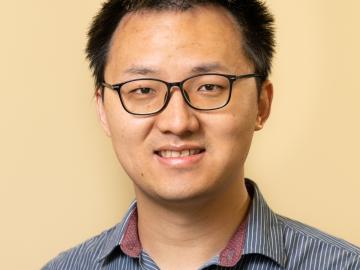
Filter News
Area of Research
- Advanced Manufacturing (3)
- Biological Systems (1)
- Biology and Environment (47)
- Clean Energy (45)
- Computational Biology (1)
- Computer Science (1)
- Electricity and Smart Grid (1)
- Functional Materials for Energy (2)
- Fusion and Fission (4)
- Fusion Energy (1)
- Isotopes (6)
- Materials (52)
- Materials Characterization (2)
- Materials for Computing (5)
- Materials Under Extremes (1)
- National Security (5)
- Neutron Science (13)
- Quantum information Science (1)
- Supercomputing (43)
News Type
News Topics
- (-) Bioenergy (57)
- (-) Biomedical (33)
- (-) Composites (12)
- (-) Exascale Computing (29)
- (-) Frontier (28)
- (-) Materials (74)
- (-) Transportation (37)
- 3-D Printing/Advanced Manufacturing (59)
- Advanced Reactors (13)
- Artificial Intelligence (56)
- Big Data (31)
- Biology (66)
- Biotechnology (11)
- Buildings (24)
- Chemical Sciences (36)
- Clean Water (14)
- Climate Change (57)
- Computer Science (103)
- Coronavirus (21)
- Critical Materials (5)
- Cybersecurity (20)
- Decarbonization (49)
- Education (1)
- Emergency (2)
- Energy Storage (44)
- Environment (118)
- Fossil Energy (4)
- Fusion (39)
- Grid (28)
- High-Performance Computing (56)
- Hydropower (5)
- Irradiation (1)
- Isotopes (35)
- ITER (3)
- Machine Learning (24)
- Materials Science (66)
- Mathematics (7)
- Mercury (7)
- Microelectronics (2)
- Microscopy (28)
- Molten Salt (2)
- Nanotechnology (28)
- National Security (46)
- Net Zero (9)
- Neutron Science (59)
- Nuclear Energy (68)
- Partnerships (23)
- Physics (35)
- Polymers (13)
- Quantum Computing (23)
- Quantum Science (34)
- Renewable Energy (1)
- Security (14)
- Simulation (36)
- Software (1)
- Space Exploration (13)
- Statistics (1)
- Summit (33)
- Sustainable Energy (55)
- Transformational Challenge Reactor (4)
Media Contacts

The world’s fastest supercomputer helped researchers simulate synthesizing a material harder and tougher than a diamond — or any other substance on Earth. The study used Frontier to predict the likeliest strategy to synthesize such a material, thought to exist so far only within the interiors of giant exoplanets, or planets beyond our solar system.

Two ORNL teams recently completed Cohort 18 of Energy I-Corps, an immersive two-month training program where the scientists define their technology’s value propositions, conduct stakeholder discovery interviews and develop viable market pathways.

Brian Sanders is focused on impactful, multidisciplinary science at Oak Ridge National Laboratory, developing solutions for everything from improved imaging of plant-microbe interactions that influence ecosystem health to advancing new treatments for cancer and viral infections.

Brittany Rodriguez never imagined she would pursue a science career at a Department of Energy national laboratory. However, after some encouraging words from her mother, input from key mentors at the University of Texas Rio Grande Valley, or UTRGV, and a lot of hard work, Rodriguez landed at DOE’s Manufacturing Demonstration Facility, or MDF, at Oak Ridge National Laboratory.

Researchers conduct largest, most accurate molecular dynamics simulations to date of two million correlated electrons using Frontier, the world’s fastest supercomputer. The simulation, which exceed an exaflop using full double precision, is 1,000 times greater in size and speed than any quantum chemistry simulation of it's kind.

Advanced materials research to enable energy-efficient, cost-competitive and environmentally friendly technologies for the United States and Japan is the goal of a memorandum of understanding, or MOU, between the Department of Energy’s Oak Ridge National Laboratory and Japan’s National Institute of Materials Science.

Bill Partridge, a recently retired distinguished researcher at the U.S. Department of Energy’s Oak Ridge National Laboratory, was recognized by DOE’s Vehicle Technologies Office, or VTO, for leading world-class research in transportation throughout his 25-year career.

Researchers at ORNL and the University of Maine have designed and 3D-printed a single-piece, recyclable natural-material floor panel tested to be strong enough to replace construction materials like steel.

When Oak Ridge National Laboratory's science mission takes staff off-campus, the lab’s safety principles follow. That’s true even in the high mountain passes of Washington and Oregon, where ORNL scientists are tracking a tree species — and where wildfires have become more frequent and widespread.

Jinghui Yuan, an R&D staff member in the Applied Research for Mobility Systems group at the Department of Energy’s Oak Ridge National Laboratory, has been elevated to a senior member of the Institute of Electrical and Electronics Engineers.


